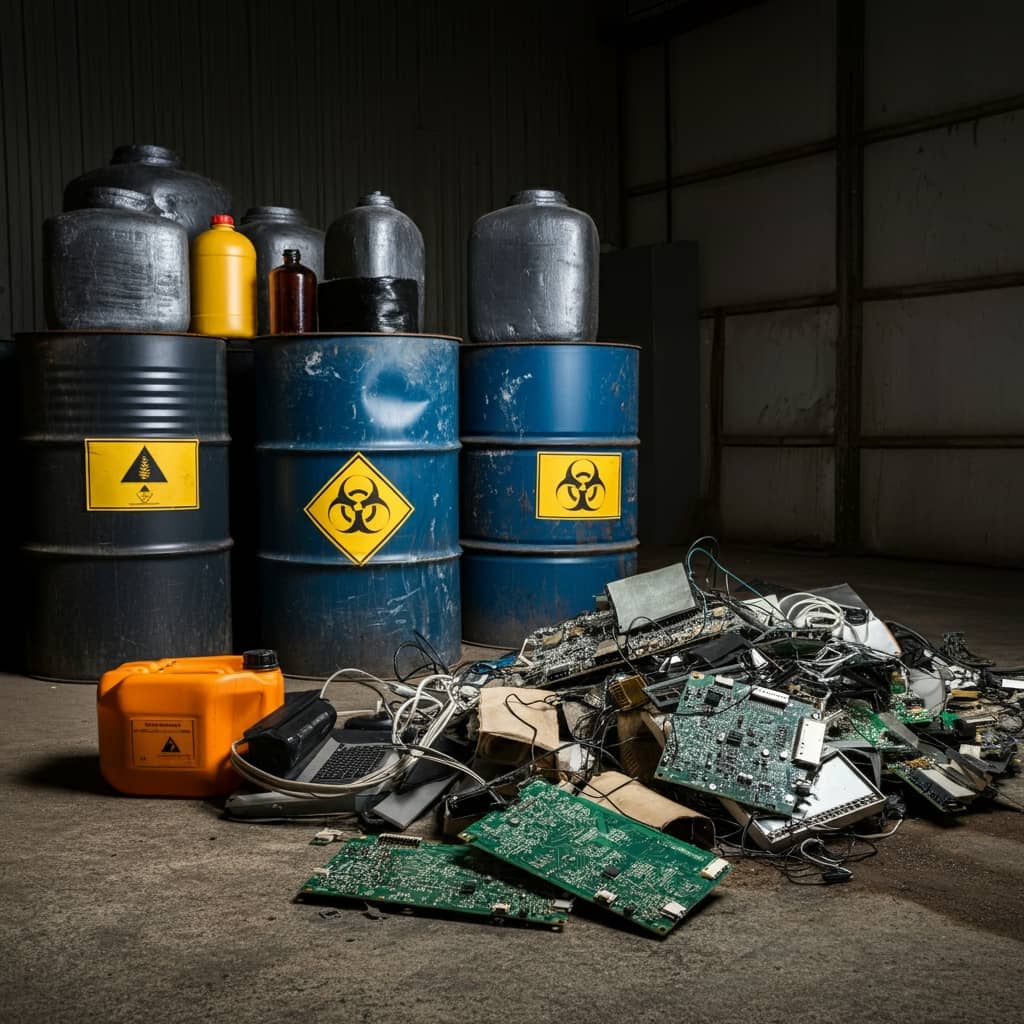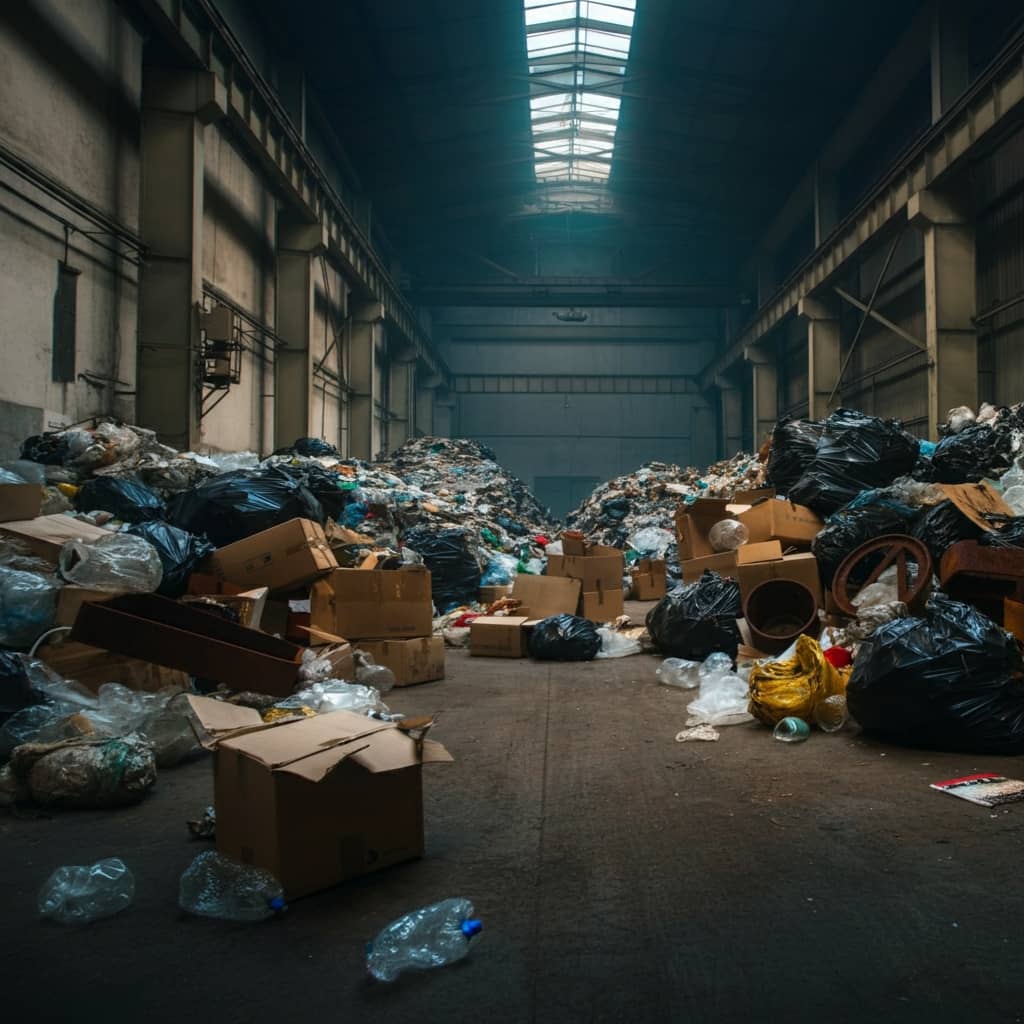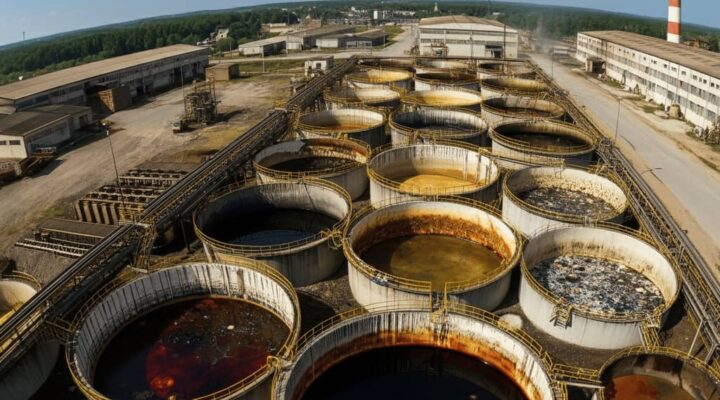A nuanced understanding of the distinctions between scheduled (hazardous) waste and general industrial waste is imperative for businesses to ensure regulatory compliance and adopt effective waste management strategies. Proper classification and disposal of these waste streams not only safeguard environmental and human health but also enhance workplace safety and mitigate the risk of substantial regulatory penalties. Furthermore, distinguishing between these waste categories allows companies to optimize their operational processes, reduce overall waste management costs, and contribute to broader sustainability goals. This blog offers an in-depth analysis of the fundamental differences between scheduled and general waste, elucidating their respective handling and disposal requirements, and explores the broader implications of effective waste management on compliance, safety, and environmental stewardship.
What is Scheduled Waste?
Scheduled waste refers to hazardous waste that presents significant risks to human health and the environment if not managed properly. In Malaysia, scheduled waste is governed under the Environmental Quality Act 1974 and the Scheduled Wastes Regulations 2005, which stipulate stringent requirements for the handling, treatment, and disposal of hazardous materials to prevent contamination and protect public health. The compliance framework is intended to minimize the harmful effects of hazardous substances on the ecosystem and communities, thereby mitigating risks to both natural habitats and human populations.

Examples of Scheduled Waste:
- Chemical Waste: This includes spent acids, alkalis, and solvents commonly produced in industrial processes. Improper disposal of these chemicals can result in serious contamination of soil and water bodies, causing long-term ecological damage.
- Heavy Metals: Waste containing toxic elements such as lead, mercury, and cadmium, typically generated from metal plating, battery production, and electronic manufacturing. These heavy metals have bio-accumulative properties, which means they can build up in living organisms over time, leading to severe health effects.
- Oil Waste: Used oils, lubricants, and sludge arising from machinery and industrial operations. Oil waste, when improperly disposed of, can form a film on the surface of water bodies, affecting aquatic life by blocking oxygen transfer and harming the delicate balance of aquatic ecosystems.
- E-Waste: Discarded electronic components, batteries, and circuit boards that contain hazardous substances. E-waste often contains valuable metals such as gold and silver, but it also includes toxic components that require careful handling to avoid environmental and health risks.
The hazardous nature of scheduled waste necessitates the implementation of rigorous handling procedures, including secure storage, proper labeling, and collaboration with licensed contractors for safe disposal. Businesses that generate scheduled waste must also maintain detailed records, often referred to as a “scheduled waste inventory,” to facilitate regulatory compliance and provide transparency in their waste management practices.
To learn more about scheduled waste, we recommend checking out our comprehensive overview on Scheduled Waste Disposal in Malaysia.
What is General Industrial Waste?
General industrial waste consists of non-hazardous by-products generated by industrial activities, which do not pose significant risks to human health or the environment. Unlike scheduled waste, general waste is subject to less stringent regulatory oversight; however, its proper management is still crucial for minimizing environmental impacts and maintaining operational efficiency. Effective management of general waste can help reduce the volume of waste sent to landfills, thereby contributing to broader sustainability and waste reduction goals.

Examples of General Waste:
- Packaging Materials: Cardboard, plastics, and other non-hazardous packaging items. These materials, if not properly managed, can contribute significantly to land pollution and resource wastage.
- Scrap Metal: Metal offcuts from manufacturing processes that do not contain hazardous substances. Recycling scrap metal can help reduce the demand for virgin metal extraction, thus saving energy and minimizing the environmental footprint.
- Industrial By-Products: Miscellaneous waste materials that are classified as non-hazardous, such as sawdust from woodworking or fabric scraps from textile manufacturing.
Management of general industrial waste typically involves recycling, repurposing, or disposal via landfill. Businesses are encouraged to embrace sustainable practices such as recycling and waste minimization to mitigate their environmental footprint. Implementing waste segregation at the source and establishing internal recycling programs can significantly enhance the efficiency of general waste management, ensuring that as much material as possible is diverted from landfills.
Key Differences Between Scheduled Waste and General Waste
Understanding the key differences between scheduled waste and general industrial waste is fundamental for implementing effective waste management practices. These differences impact how each type of waste is handled, treated, and regulated. Below are the primary distinctions that businesses must be aware of to ensure compliance and minimize environmental impact.
- Hazardous vs. Non-Hazardous: Scheduled waste is inherently hazardous, posing risks to human health and ecological systems, while general waste is largely non-hazardous. The hazardous nature of scheduled waste requires stringent handling protocols to prevent exposure and contamination, while general waste poses relatively fewer risks.
- Handling and Treatment Requirements: Scheduled waste necessitates specialized handling, storage, treatment, and disposal procedures, including adherence to strict safety measures. General waste can be managed through conventional methods, such as recycling or landfilling. Scheduled waste often requires containment in specifically designed facilities that prevent leakage and ensure safe transportation, while general waste is typically managed using less specialized infrastructure.
- Regulatory Framework: Scheduled waste is stringently regulated under the Environmental Quality Act 1974 and the Scheduled Wastes Regulations 2005, whereas general waste is managed under less restrictive regulations. Compliance with the regulations for scheduled waste often involves multiple layers of documentation, inspections, and reporting to ensure adherence to safety and environmental standards.
Why Correct Classification is Crucial?
Properly classifying industrial waste is critical to ensure that each type of waste is managed in line with its specific regulatory requirements and environmental impact. Scheduled waste and general waste have distinct classifications, each with its own legal obligations and handling protocols. Correct classification helps prevent improper disposal, ensures regulatory compliance, and ultimately protects human health and the environment.
- Compliance: Proper waste classification is fundamental to maintaining regulatory compliance. Misclassifying hazardous waste as general waste can lead to inadequate handling, which may result in severe regulatory penalties and environmental harm. Businesses must develop robust internal protocols to accurately classify waste streams to prevent inadvertent violations of regulations.
- Impact on Health and Environment: Misclassification of scheduled waste can have dire consequences, including soil and water contamination and heightened health risks for workers and local communities. The improper disposal of hazardous waste can lead to the introduction of toxic substances into ecosystems, causing bioaccumulation and biomagnification, which may eventually impact human food sources.
- Penalties for Misclassification: Incorrect classification of waste can result in legal repercussions, including substantial fines, reputational damage, and potential business disruptions. Therefore, stringent classification protocols are vital to mitigate these risks. The costs associated with legal action, cleanup, and remediation of contaminated sites can be considerable, making accurate classification a priority for responsible businesses.
Handling and Disposal Requirements
Proper handling and disposal of industrial waste are vital for mitigating environmental impact, maintaining safety standards, and ensuring compliance with regulatory requirements. The specific requirements for handling scheduled and general waste differ significantly, as each type demands a unique approach in terms of containment, treatment, and documentation to prevent contamination and legal issues.
- Scheduled Waste Disposal: The handling and disposal of scheduled waste necessitate specific safety measures to prevent environmental contamination. This includes secure storage in clearly labeled containers, transportation by certified carriers, and disposal at licensed treatment facilities. Accurate documentation is essential, with detailed records maintained for regulatory inspections. Businesses must also conduct regular training for employees to ensure adherence to safety protocols during waste handling.
- General Waste Disposal: General waste is typically managed through methods such as recycling, repurposing, or landfilling. Although general waste is less tightly regulated, businesses are encouraged to implement sustainable practices, such as segregation and recycling, to minimize their environmental impact. Many organizations are also exploring the use of waste-to-energy technology to convert non-hazardous waste into useful energy, reducing the volume of waste destined for landfill.
Comparison of Processes:
- Scheduled waste disposal requires a comprehensive approach involving specialized containment, regulatory documentation, and transportation by licensed contractors. Compliance measures include maintaining a waste tracking system, utilizing spill containment strategies, and adhering to specific disposal timelines.
- General waste disposal is comparatively straightforward, involving collection, sorting, recycling, or final disposal via landfill. The emphasis is on maximizing resource recovery through recycling and ensuring that waste disposal aligns with environmental best practices.
Challenges in Managing Different Types of Waste
Managing different types of waste—scheduled and general—presents numerous challenges that can significantly impact businesses, especially those lacking experience or resources in waste management. Proper handling, regulatory compliance, and sustainable practices require a thorough understanding of both types of waste and the regulations that govern them. Below are some of the key challenges that businesses face when managing these different waste streams:
- Complex Regulations: Navigating the intricate regulatory requirements governing scheduled waste can be challenging, particularly for businesses unfamiliar with these mandates. The regulations require businesses to adopt specialized waste management practices, conduct regular audits, and report their waste handling activities to authorities.
- Cost Factors: Proper management of hazardous waste involves higher costs due to the need for specialized handling, treatment, and compliance with regulatory standards, which often exceed the costs associated with general waste management. Costs can include investments in specialized storage facilities, compliance audits, and hiring licensed waste transporters.
- Lack of Awareness: Many businesses lack sufficient knowledge to effectively distinguish between scheduled and general waste, which can lead to improper disposal practices and potential regulatory infractions. A lack of training and awareness about waste categorization can result in severe environmental harm and significant penalties for businesses.
Best Practices for Waste Classification and Disposal
Adopting best practices for waste classification and disposal is essential for ensuring regulatory compliance, minimizing environmental impact, and safeguarding public health. By following proper procedures and guidelines, businesses can manage scheduled and general waste more effectively, reduce potential risks, and improve operational efficiency.
- Waste Audits: Conducting periodic waste audits is critical to accurately classify and manage various types of waste. Such audits facilitate the adoption of proper disposal methods, thus ensuring compliance with legal requirements. Waste audits also help identify opportunities for waste minimization and resource recovery, leading to cost savings.
- Training and Awareness: Providing training programs for employees to recognize and correctly classify waste is essential. This ensures that both scheduled and general wastes are managed appropriately, thereby reducing environmental risks and compliance challenges. Training should be comprehensive, covering not only the identification of different waste types but also the legal obligations and safety practices associated with each.
- Partnering with Licensed Contractors: Engaging licensed contractors for the disposal of scheduled waste is crucial to ensuring adherence to regulatory standards. Licensed contractors possess the expertise and resources necessary for the safe handling and disposal of hazardous materials. Additionally, contractors are well-versed in regulatory requirements, which reduces the risk of non-compliance and helps ensure that waste is managed in a manner that is environmentally sound.
For more detailed guidance on proper disposal practices, check out our article on How to Dispose Scheduled Waste in Malaysia.
Conclusion
A clear understanding of the distinctions between scheduled waste and general industrial waste is essential for ensuring compliance with Malaysian regulations and promoting environmental responsibility. Proper classification, handling, and disposal of waste help protect the environment, safeguard public health, and minimize legal and financial risks. Businesses must prioritize correct waste management practices to comply with regulations, reduce environmental impact, and support broader sustainability goals.
To ensure effective management of scheduled waste and compliance with all regulations, contact Metahub for expert guidance and support in managing scheduled waste streams.





